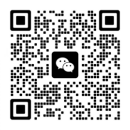At present, from the domestic and foreign literature research, the commonly used VOCs detection methods are: gas chromatography detection technology, catalytic detection technology, spectral detection technology, electrochemical sensor detection technology. 1) Gas chromatography detection technology: gas chromatography is the detection of gas substances or substances that can be converted into gas at a certain temperature. The analysis first uses the column to separate the components to be measured, and then the selected detector determines the name of the component according to the peak position, and determines the concentration according to the peak area. Meteorological chromatography is relatively insensitive to changes in environmental conditions, good stability, suitable for constant or trace routine analysis. 2) Catalytic detection technology: VOCs react with the oxygen in the catalyst, resulting in the reduction of the metal oxide in the catalyst, and then the reduced metal oxide is oxidized by the oxygen in the gas phase. The sensor is used for sampling in the catalytic process. 3) Spectral detection technology: spectral detection method is mainly based on the absorption of light, emission, Raman scattering and other effects of the establishment of analytical methods, through the wavelength and intensity of the spectrum for qualitative and quantitative analysis. Spectral detection methods include absorption spectroscopy, emission spectroscopy and dispersion spectroscopy. 4) Electrochemical sensor detection technology: gases generally have active chemical properties, which are characterized by reduction or oxidation. In the process of chemical reaction, electrons are released or absorbed to form a weak current, and the gas concentration to be measured can be obtained by measuring the weak current. The advantage is that the performance is relatively stable, the disadvantage is that the electrochemical sensor belongs to consumables, the service life is relatively short, and the maintenance cost is relatively high. Regardless of any of the above detection methods, the detection system will include electronic sensors or related amplification circuits for signal acquisition and processing. Since electronic components have attenuation and temperature drift with time, temperature and humidity, in order to ensure the accuracy of the obtained data, engineers need to be regularly dispatched to the site for equipment calibration and replacement of consumable materials. From the actual situation, this traditional operation method is inefficient, labor time cost and vehicle fuel cost are high. Based on the above reality, a remote control system is designed, which can replace engineers to operate the VOCs detection equipment to achieve the purpose of calibration of the equipment. The working principle of the remote control system: the client APP simulates the keyboard operation interface of the actual device. The client can select one of the keys to be pressed through the APP, and then send the instructions to the DTU through the cloud platform. The DTU and panel actuators communicate via wireless USART, and the communication protocol satisfies the Modbus RTU protocol specification. When the panel actuator obtains the command to press one of the keys, the MCU will first look up the coordinates of the key; It mainly includes the number of steps of the X axis and Y axis stepping motor, and then MCU calibrates the coordinates through the algorithm and drives the X axis motor and Y axis motor to rotate the same step distance. Finally, MCU drives the Z axis motor to perform relevant actions to simulate the process of keys being pressed. 2.1 Hardware design of panel actuator According to the functional requirements, the hardware of actuator mainly includes communication module, power management module, motor drive module and MCU minimum system module. These modules are introduced in detail as follows. 1) MCU minimum system module: This control system selects STM32F103RBT6 as the main control chip, its main frequency is 72 MHz, RAM is 20 KB, FLASH is 128 KB; Its peripheral equipment includes 2 USART, 1 CAN, 51 1O; Because there is no complex mathematical algorithm in the panel actuator program, its performance fully meets the development requirements. In the design of MCU minimum system, the corresponding power pin of MCU was connected to 3.3V power supply and GND. Then PIN5 and PIN6 are connected with 8 MHz crystal oscillator and 22 PF filter capacitor. At the same time, pull the PIN60 (BOOTO) pin low, indicating that after the microcontroller reset, the program will start from Flash; Finally, the download port pins (JTCK, JTMS, RESET) are extended to download the program. At the same time, the LED circuit and the buzzer circuit are designed in the minimum system module to represent the operation fault of the actuator.
-
Phone
0755-83210303 -
Wechat




